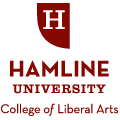Document Type
Article
Publication Date
10-2013
Publication Title
Journal of Rural Studies
Volume
32
First Page
307
Last Page
319
Embargo Period
3-16-2016
Keywords
Toronto, critical landscape studies, cultural geography, collaborative environmental management, growth management, political ecology, urban rural interface, peri-urban fringe, exurbia, anti-sprawl policy
Abstract
We analyze the role of landscape ideology in the recent Ontario Greater Golden Horseshoe (GGH) Greenbelt Plan. Focusing on the “Protected Countryside,” the major land-use designation in the Plan that structures the Greenbelt framework, we explore tensions between abstract ideals of countryside used by policy makers to elicit support for the Plan and people's lived experience of material landscapes of the peri-urban fringe. Approaching “countryside” from the combined perspectives of landscape studies and political ecology, we show how the abstract ideals used to build support for the protection of countryside in the high-level political arena are in tension with existing material landscapes as people experience them. When implementing the Greenbelt Plan, the abstract ideals have to be applied at the landscape level through negotiation with municipalities, property owners, and other interests. In addition to drawing upon more conventionally legitimate explanations for landscape protection based on environmental science and land-use planning principles, the designation of Protected Countryside and the strategies used to implement the Protected Countryside designation at the local level suggest a tentative commitment to recognizing landscape values and collaborative environmental management processes in policy-making. As with any such normative land-use plan, the success of the Greenbelt Plan hinges on the long-term agreement between planning agencies and diverse publics. We demonstrate the usefulness of approaching environmental management challenges at the urban–rural interface by bringing the perspectives of landscape studies and political ecology into implementation processes for land-use management strategies like the Greenbelt. We argue that public participants deserve legitimate collaborative roles in negotiating just and desirable land uses based on their experiences, and provide observations on ways to bring contested goals and tools for achieving them into reflexive negotiations about how landscapes are and should be produced.
Rights
This is the author's submitted copy before peer reviewed edits. The final, definitive version of this document can be found online at Journal of Rural Studies published by Elsevier. Copyright restrictions apply. doi:10.1016/j.jrurstud.2013.07.005
Recommended Citation
Cadieux, Kirsten Valentine; Taylor, Laura E.; and Bunce, Michael F., "Landscape ideology in the Greater Golden Horseshoe Greenbelt Plan: Negotiating material landscapes and abstract ideals in the city's countryside" (2013). College of Liberal Arts All Faculty Scholarship. 1.
https://digitalcommons.hamline.edu/cla_faculty/1

